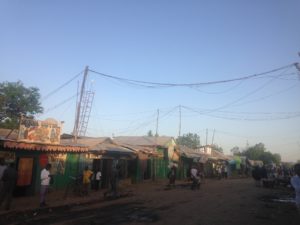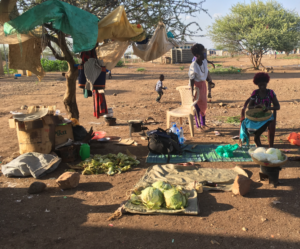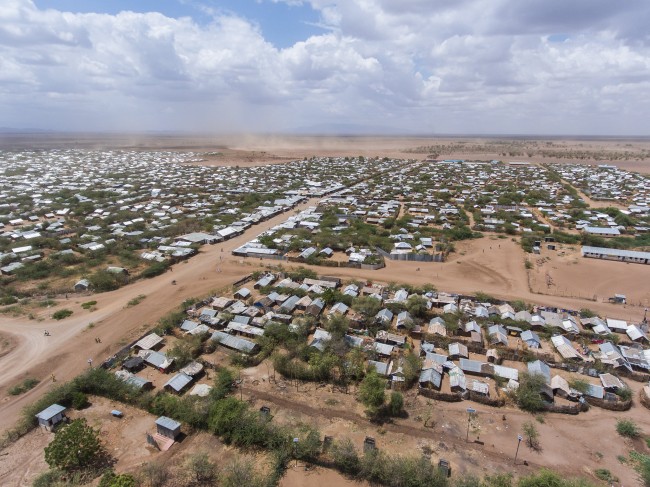Social cohesion is now a mainstream policy objective for the UN Refugee Agency (UNHCR) and its partners. It is an integral part of the Regional Refugee and Resilience Plan for Syria, with community-based initiatives in Turkey, Lebanon, Jordan and other affected countries. Meanwhile UNICEF is investigating the potential for cash transfers to foster social cohesion between Colombian refugees and their Ecuadorian hosts. Several major faith-based humanitarian organisations – including the Lutheran World Federation and the Jesuit Refugee Service – have adopted social cohesion as a core programmatic objective related to conflict resolution and reconciliation.
These come as a response to increasing recognition of the disruptive effects of forced migration on receiving countries and communities. As stated in the 2016 New York Declaration for Refugees and Migrants:
"Neighbouring or transit countries, mostly developing countries, are disproportionately affected. Their capacities have been severely stretched in many cases, affecting their own social and economic cohesion and development"
Definitions
In sociological terms, social cohesion is usually defined as the extent to which there are bonds within a group or society, which foster trust among strangers, willingness to cooperate and confidence in institutions. However, there is much variation in the ways that cohesion is defined. Some see it as a function of shared values and identity. Others define it as a measure of inclusivity and acceptance of diversity.
As pointed out in a desk review on social cohesion and forced displacement, most refugee policies and programmes forgo any definition at all.
Given this lack of specification, my research looks at social cohesion initiatives through an anthropological lens. My aim is to understand how – in the absence of initial definitions by policymakers and planners – different meanings of social cohesion nonetheless emerge during the life of a programme.
Kakuma: a case study
My research has focused on the Kakuma camp in north-western Kenya, where the UNHCR has provided protection to refugees and asylum seekers from South Sudan, Somalia, the Great Lakes Region and elsewhere since 1992.

The late afternoon sun fades on one of the Kakuma camp's commercial areas
Relations between refugees and the local Turkana population have been rocky since the camp was first established. Many locals resent that food rations are provided exclusively to refugees while Turkana people themselves face comparable levels of food insecurity and poverty. Environmental degradation around the camp has angered local pastoralists, who rely on trees and shrubs for their livelihoods. While everyday interactions and personal relations – indeed, even marriages – between refugees and host are common, isolated disputes can quickly balloon into inter-communal confrontations. Occasional clashes – most recently in July 2019 – have resulting in casualties, loss of property, and persistent mistrust.
The UNHCR and its implementing partners have long focused on conflict reduction and mediation through community leaders. But in 2015, the UNHCR took a strategic turn toward socio-economic integration in Kakuma, starting with the construction of the Kalobeyei Integrated Settlement. Billed as an alternative to the conventional refugee camp, the settlement was designed to benefit refugees and hosts alike, and social cohesion became an objective in many of its programmes.
Various cash assistance programmes give both refugee and Kenyan entrepreneurs the chance to build livelihoods through the humanitarian economy. Agricultural projects place refugee and Turkana farmers side by side on joint plots. Sports programmes bring refugees and hosts together for exercise and recreation.

A group of Turkana women sell vegetables and fish at the Kalobeyei Settlement
The meaning of ‘social cohesion’ as a programme objective remains vague. Interviews with humanitarian employees who run such programmes tend to emphasise two short-term goals: 1) reducing resentment by extending livelihood opportunities to both refugees and hosts and 2) providing opportunities for refugees and hosts to interact and build relationships through joint activities.
However, the long-term goal remains unclear, and it is uncertain what a cohesive society would look like in Kakuma or Kalobeyei. Refugees have different legal status and face far greater restrictions than Turkana residents. Unlike local integration, in which refugees are eventually naturalised, socio-economic integration does not provide a pathway to citizenship and is not a durable solution. Rather, it is a strategy to make protracted displacement more tolerable for refugees and less expensive for donors. Social cohesion programmes may reduce tensions and foster more positive relations between refugees and locals, but there are legal barriers to inclusivity that, in turn, curtail the potential for solidarity and cohesion.
Remaining divisions
Moreover, there is reason to question the assumption that more interaction will result in better relationships and greater cohesion. The agricultural initiatives in Kalobeyei seem to be fostering cooperative relations between refugees and hosts. But in some of the cash-based interventions, which provide a market for local businesses, the refugee-host divide has been reinforced. Refugee entrepreneurs were generally seen to have an advantage due to their affiliations with refugee customers as well as their diaspora links within and beyond Kenya, which they could us in procuring supplies for their shops. On at least one occasion, hosts banded together and issued threats to refugee retailers with whom they felt they could not compete.
Finally, social cohesion programmes remain focused on tensions between refugees and hosts. But the humanitarian presence has also contributed to rifts within the host population. Across Turkana, there are deepening cultural and class divisions between those who access school – most of whom move to town in search of jobs – and those who pursue wealth through pastoralism, the primary livelihood in the rural drylands. In Kakuma, pastoralists are largely excluded from the most lucrative business and employment opportunities afforded by the humanitarian economy, which are best suited to the capacities of urbanites. This leaves pastoralist with diminishing social capital and a sense that they are being left out of the progress in Kalobeyei. As I recently argued in the Journal of Refugee Studies, the use of the term ‘host community’ in refugee policy often implies qualities of homogeneity and solidarity that grossly mischaracterise the socioeconomic stratification and diversity of interests in the local population.
Considerations for the future
In summary, this research suggests several broad considerations for social cohesion programmes in Kakuma:
- While some kinds of interactions between refugees and hosts may provide an opportunity for new relationships to develop, competitive interactions can increase tensions and raise the prospects of inter-communal conflict.
- Despite current enthusiasm about the socio-economic integration agenda, there are limitations to social cohesion in camps.
- Finally, to avoid further disenfranchisement of certain segments of the host population – especially pastoralists – social cohesion programmes should focus not only on relations between refugees and hosts, but on broad inclusion in the opportunities afforded by the humanitarian economy.
Cory Rodgers is Pedro Arrupe Research Fellow in Forced Migration Studies at the Refugee Studies Centre, Oxford. He will be presenting his work on this topic on 23 January as part of the COMPAS Seminar Series: Refugees and Host Communities: perspectives, evidence and thinking.
